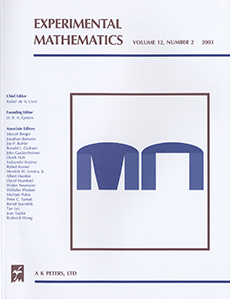Abstract
We demonstrate how to construct three-dimensional compact hyperbolic polyhedra using Newton's method. Under the restriction that the dihedral angles must be nonobtuse, Andreev's theorem provides as necessary and sufficient conditions five classes of linear inequalities for the dihedral angles of a compact hyperbolic polyhedron realizing a given combinatorial structure $C$. Andreev's theorem also shows that the resulting polyhedron is unique, up to hyperbolic isometry. Our construction uses Newton's method and a homotopy to explicitly follow the existence proof presented by Andreev, providing both a very clear illustration of a proof of Andreev's theorem and a convenient way to construct three-dimensional compact hyperbolic polyhedra having nonobtuse dihedral angles.
As an application, we construct compact hyperbolic polyhedra having dihedral angles that are (proper) integer submultiples of $\pi$, so that the group $\Gamma$ generated by reflections in the faces is a discrete group of isometries of hyperbolic space. The quotient $\mathbb{H}^3/\Gamma$ is hence a compact hyperbolic 3-orbifold, of which we study the hyperbolic volume and spectrum of closed geodesic lengths using SnapPea. One consequence is a volume estimate for a ``hyperelliptic'' manifold considered in Mednykh and Vesnin.
Citation
Roland K. W. Roeder. "Constructing Hyperbolic Polyhedra Using Newton's Method." Experiment. Math. 16 (4) 463 - 492, 2007.
Information




